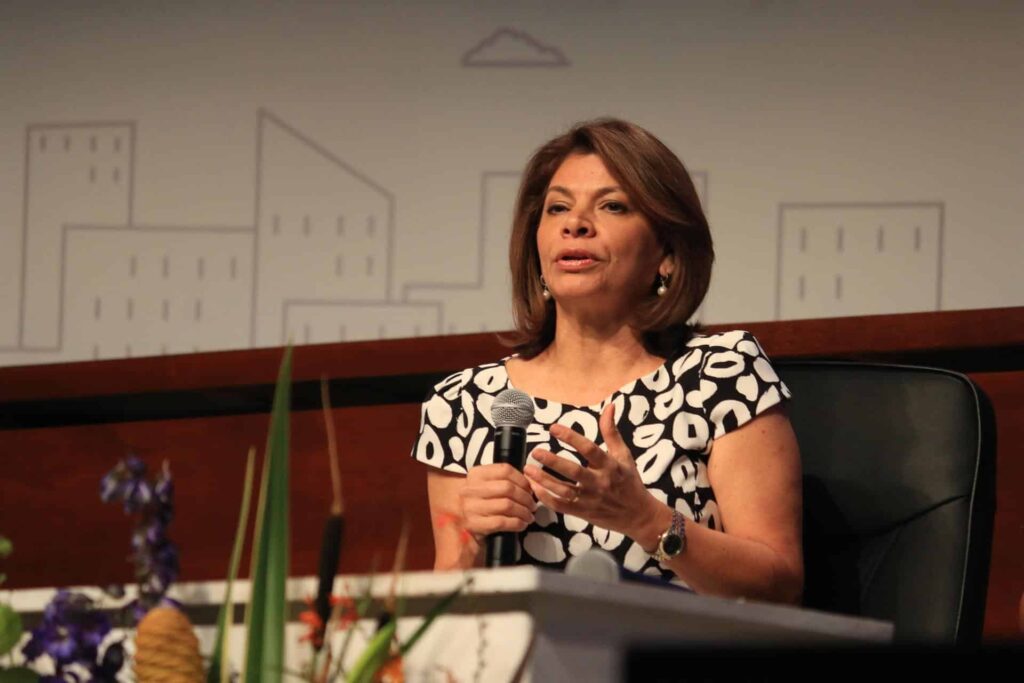warns former president Laura Chinchilla

“If something isn’t done right now, this government will condemn Costa Rica to a path similar to that of Ecuador,” says the former president
By Cindy Regidor (Confidencial)
HAVANA TIMES – As Costa Rica’s inhabitants become increasingly alarmed by the current unprecedented security crisis, President Rodrigo Chaves has not responded to the serious problem, says Laura Chinchilla, former president of Costa Rica (2010-2014) and also former Security Minister (1996-1998).
In an interview with Esta Semana and CONFIDENCIAL, the former president offers an analysis what has caused Costa Rica –until recently one of the most peaceful countries in the region– to experience the most violent year in its history, with a projected 900 murders by the end of 2023, and a homicide rate of 17 per 100,000 inhabitants.
Chinchilla is critical of President Chaves for focusing –in the midst of presenting his National Security Policy on November 22, 2023– on placing responsibility for fighting crime on the Legislative Assembly and the Judiciary. Furthermore, she believes that if the president does not do enough, Costa Rica could follow the path of Ecuador, whose last presidential election campaign was marked by the assassination of candidate Fernando Villavicencio, whose discourse focused on combating drug trafficking.
The former president also stressed the importance of social policies directed at young people in poor communities –where a large part of the Nicaraguan migrant population lives– to prevent them from becoming easy prey for recruitment by criminal gangs operating in Costa Rica.
Authorities attribute the increase in malicious homicides in recent years to drug trafficking, but this is not a new phenomenon, neither in Costa Rica nor in the region. What has changed?
In the case of Costa Rica, when we analyze, for example, the allocation of resources to public security, the recruitment of police personnel, the allocation of resources to judicial institutions –especially the Public Prosecutor’s Office–, and the investigative police, we see that resources have been decreasing, weakening [the institutions].
Adding to this, the guard was lowered in the fight against organized crime. It took seven years to operationalize a special jurisdiction on this issue because the law that we approved at the time lacked resources for some time.
The Costa Rican government lowered its guard and organized crime is clearly looking for opportunities to move in at a time when our region is becoming an exporting power of cocaine, opium and also fentanyl. Pressure and threats are increasing in our countries, and now Costa Rica is experiencing them with particular severity.
Why is 2023 the most violent year in Costa Rica’s history?
Because when we analyze the homicide rate –an indicator that allows us to measure which countries are more or less violent–, by the end of this year, we will have seen a terrible increase of almost 40% in the number of violent deaths.
This will potentially take us from 12 homicides per 100,000 inhabitants, which was already high for Costa Rica, to almost 17 homicides per 100,000 inhabitants.
This is a warning sign, particularly when we see that in some regions of the country –especially the coastal regions– these rates are doubling and even tripling.
The perception is fueled by the increase in malicious homicides, and also by the media’s coverage of how they are occurring in places where these kinds of crimes were not seen before: on soccer fields, near schools, outside a hospital. But which are the areas that are in fact most affected by this situation, and who are the victims?
There are two main factors: One is that the majority [of these homicides] –over 60%– are committed in gang fights. Another striking factor is the use of firearms. Almost 70% are committed with firearms.
The greatest number of victims continue to be members of these gangs and [the homicides] tend to occur in those areas where gang members have preferential routes for the distribution of their drugs. That is why the co


